In Canada, ArcticWOLVES has been divided into 2 major components and for each of these components a research proposal has been submitted for funding.
1. Trophic dynamics of Arctic food webs
This project focuses on trophic interactions (plants-herbivores-predators) among birds and mammals of the tundra, primarily in the small to medium size range. Our aim is to study the strength of these interactions and how they vary locally (i.e. across habitats) and regionally (i.e. across distant sites) in the Arctic. Canadian field sites will span a latitudinal (from 60° to 83°N) and a longitudinal range (from 62° to 140°W), thereby providing appropriate gradients for comparative work (for instance, plant productivity decreases from south to north whereas recent warming trends have apparently been more pronounced in western than in eastern Arctic). Our working hypothesis is that top-down processes driven by predators are the primary forces structuring arctic communities. Studying these trophic interactions using a comparative approach will allow us to shed some light on the questions of relative strength of bottom-up vs. top-down effects in structuring arctic communities, a necessary pre-requisite to evaluating the sensitivities of tundra ecosystems to disturbance.
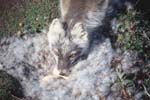 |
 |
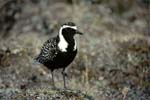 |
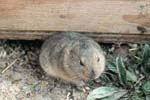 |
We have structured our project into various sub-components based on taxonomic
groups and trophic levels. Each sub-component has a set of specific objectives
relevant to the study group and most of them will have two sets of field
methods: extensive and intensive ones. Extensive methods will rely on
a set of standard protocols that will be applied at all sites. They will
insure that data collected by different investigators at different sites
will be compatible and will allow comparative analyses over a broad spatial
scale. Intensive methods will be applied only on a subset of sites for
a given taxonomic group, often the sites where we have the most detailed
knowledge of the study group. They will allow a more detailed investigation
of questions specific to each taxonomic group, or will be used to calibrate
some of the less intensive protocols applied at all sites. The field work
for this project will be conducted mainly at 6 primary sites.
2. Impacts of climate change on terrestrial animal biodiversity
The goal of this project is to assess the current and future effects of climate change on terrestrial Arctic wildlife, focusing on a set of species chosen to maximize both scientific return and benefits to stakeholders. Selected species i) include a diversity of taxa (insects, birds, mammals) representative of all functional trophic groups (herbivores, insectivores, predators), ii) have a history of monitoring through scientific projects or local observations by trappers and hunters, iii) are managed as wildlife populations (e.g. by Canadian Wildlife Service or the Nunavut Wildlife Management Board), iv) contribute to the monitoring and maintenance of ecological integrity (Parks Canada), or the culture and well being of local communities, v) are sufficiently widespread geographically to feed international databases of circumpolar monitoring, and vi) are, in some cases, amenable to manipulative experiments. We will concentrate our efforts on key species of herbivores (geese, lemmings), and predators (foxes, snowy owls, falcons, gulls, jaegers), insectivores (shorebirds), and on their prey (insects) or forage species (plants) at several Canadian Arctic sites. This component of ArcticWOLVES is structured into several smaller projects arranged around 5 themes. These 5 themes propose to:
- Measure the abundance, distribution, and phenology of reproduction
of wildlife species using standard protocols to build a spatially-explicit
database.
- Assess change in wildlife abundance, distribution, and use by people
from northern communities in relation to climatic change.
- Assess changes in the habitat of selected wildlife species and soil
micro-organisms that are linked to northern people, using a combination
of field measurements and remote sensing data.
- Conduct field experiments to measure the effects of key climatic events
on herbivores, soil nutrient availability, and plant growth.
- Evaluate our ability to project future changes in distribution and abundance of targeted species under different climate-change regimes using resource-selection functions.
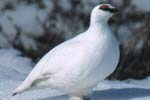 |
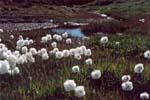 |
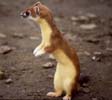 |
 |
